You were looking for that perfect show to binge-watch, and just before you knew it, the beloved Retina display on your Macbook pro started flickering.
White lines covered your screen, and all you could think about was the price tag you would have to pay to fix your perfect display.
Well, before you run for the hills and pay a hefty price to get your display fixed, you could take matters into your hand and try to solve the flickering.
If you are lost and don’t know where to start, you are in the right place. This article will look at ten ways to fix the flickering issue on your Macbook pro.
Also read: How to check your MacBook’s specs?
Restart your Macbook pro
This might sound cliche, but simply restarting your system might solve the flickering screen issue on your Macbook pro. This can be a quick fix because your system manages several processes at any given time, sometimes a process malfunctions and causes issues with the system’s memory.
Restarting your system clears the Random Access Memory on your system and other software glitches which could be causing your screen to flicker. To restart your Macbook pro, you can follow the steps given below:
Step 1: Click on the Apple icon on the top left corner of the screen and click on Restart.
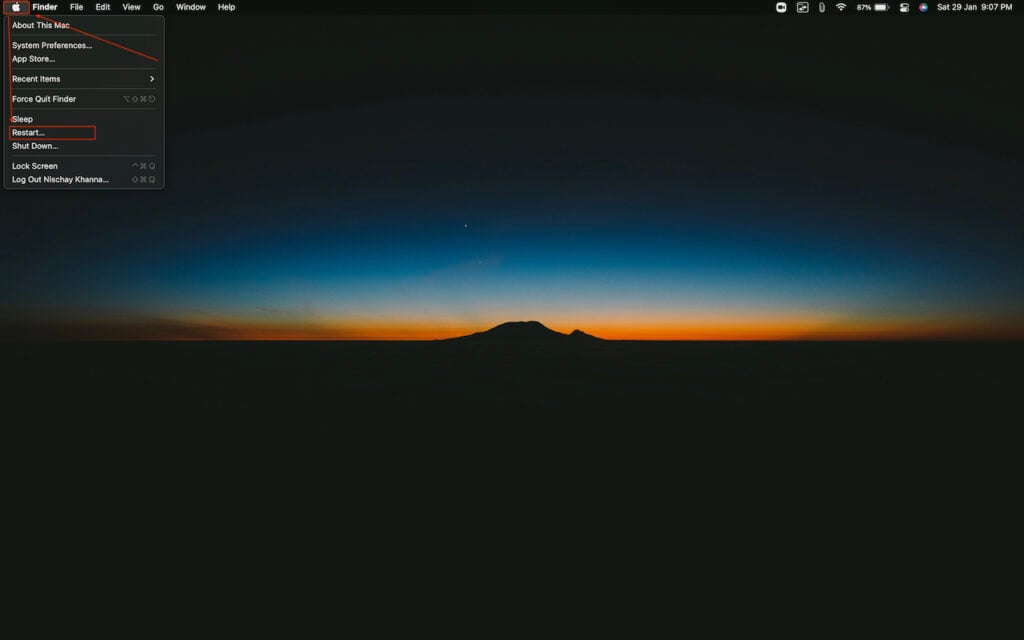
Step 2: Click on Restart in the pop-up window.

If an external application is causing your screen to flicker, then reopening it might cause the flickering again. Therefore, you should ensure that the check box next to Reopen windows when logging back in is not checked.
Check for software updates
Most often than not, the issue you face on your machine is due to an obsolete version of the operating system on your Macbook pro. To fix the same, all you have to do is update your system to the latest version of software offered by Apple.
Before you update your system, it is advised that you take a backup for all your data. Doing this will protect your data if things go haywire during the update.
Here is how to update your Macbook
Also read: How to create a folder on MacBook?
Adjust display settings on your Macbook pro
Your MacBook Pro has a plethora of sensors hidden everywhere. One of these sensors is next to the camera module on your device. This sensor detects the ambient lighting around you and adjusts the brightness accordingly.
In some cases, an issue with these sensors can cause your screen to flicker. Not only this, features like true tone on the Macbook pro can also cause your display to flicker.
To solve these issues, you can make the following changes to your display settings.
Step 1: Use the command + space shortcut to open Spotlight on your Macbook pro.
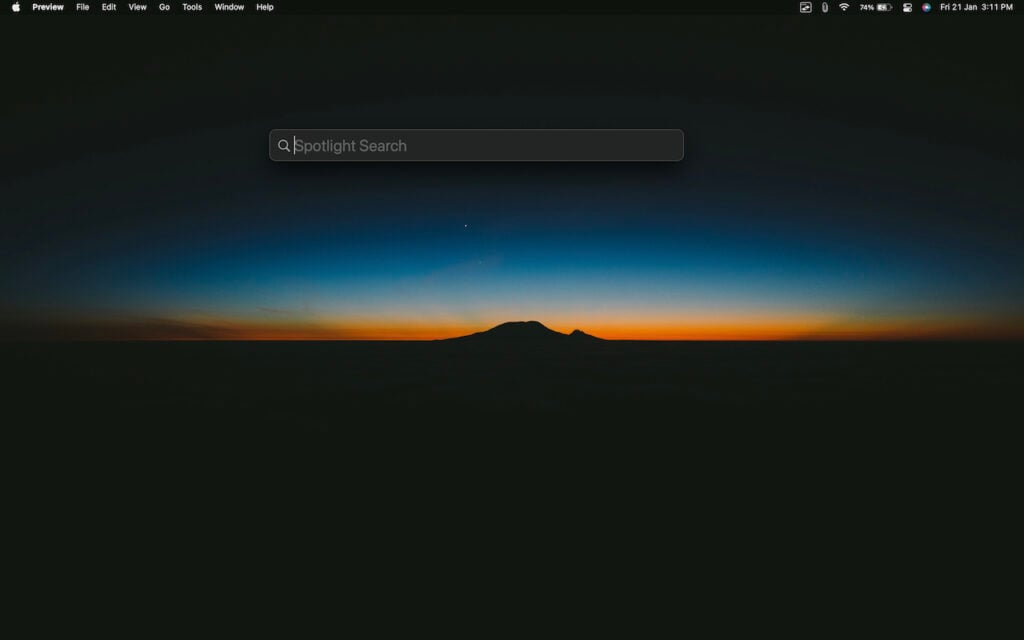
Step 2: Search for System Preferences and hit return.
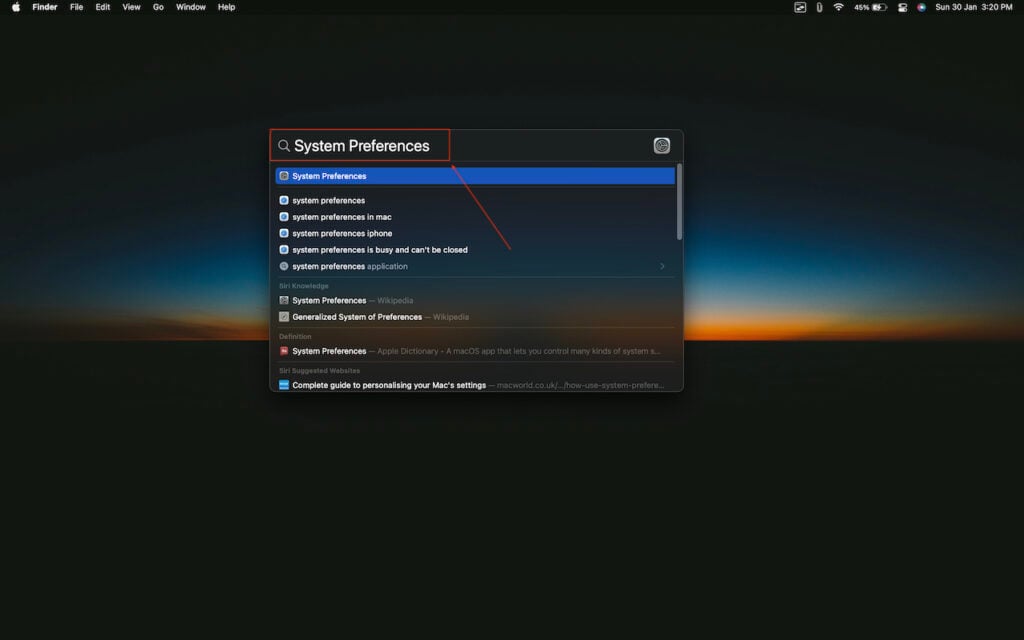
Step 3: Click on Displays.

Step 4: Uncheck the box next to Automatically adjust brightness and True Tone.

Step 5: Click on the box next to Color Profile and select Colour LCD.

Making all these changes will turn off features like true tone and adaptive brightness, but they can prevent your screen from flickering.
Tweak the accessibility settings on your system
Apple devices offer colour filters to help people with vision deficiencies. Although these filters are used to change how the colours look on your display, using colour filters can prevent your screen from flickering.
To apply colour filters to your display, you can follow these steps:
Step 1: Use the command + space shortcut to open Spotlight on your Macbook pro.

Step 2: Search for System Preferences and hit return.

Step 3: Click on Accessibility.
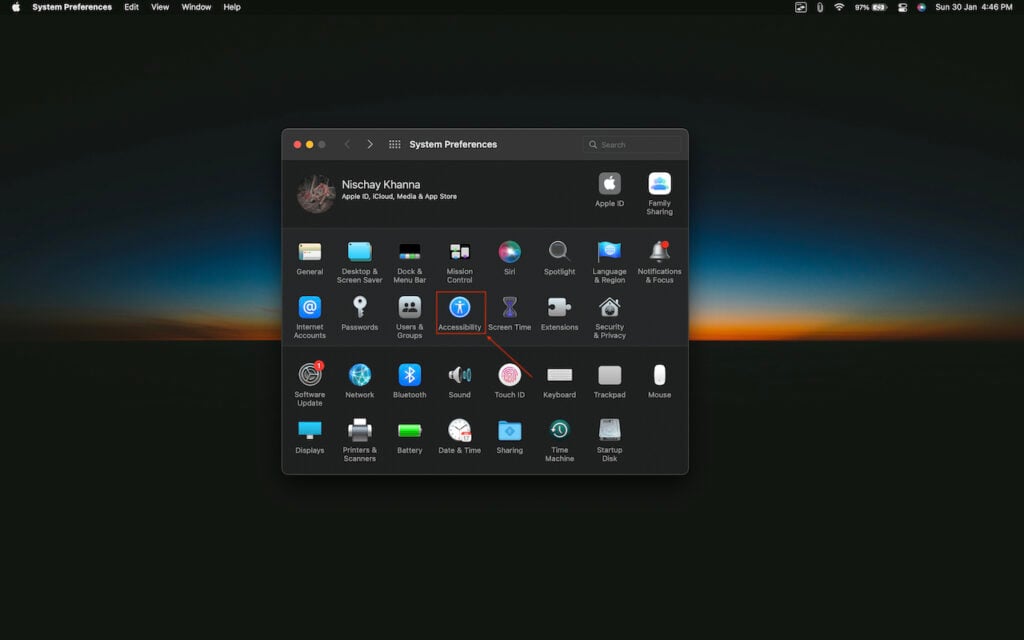
Step 4: Click on Displays.

Step 5: Click on Colour FIlters.

Step 6: Click on the check box next to Enable Colour Filters and select Filter type as Blue/Yellow filter (Tritanopia).

Using this filter will not change the colours on your display, and it could solve the flickering issue you are facing.
Also read: How to delete photos on your MacBook?
Delete cache files on your Macbook pro
The processes running on your system create temporary files known as cache files. These cache files are created by web browsers, music applications and many others to store data temporarily.
As the files are temporary, they are not required by the processes running on your system all the time. In addition to this, if the files are deleted, applications that need the temporary files create them again. Therefore, deleting these files will not harm your system in any way.
In most cases, this data does not cause any issues to the system, but sometimes an erroneous entry in the temporary files can cause your screen to flicker. To delete cache files on your system, you can follow these steps.
Step 1: Click on Go and select Computer from the drop-down menu.

Step 2: Click on Machintosh HD.

Step 3: Click on Library.

Step 4: Double click on Caches.

Step 5: Select all the files in the folder, press command + option + delete and click on Delete.

Step 6: Click on Go, press the option key, and click on Library.
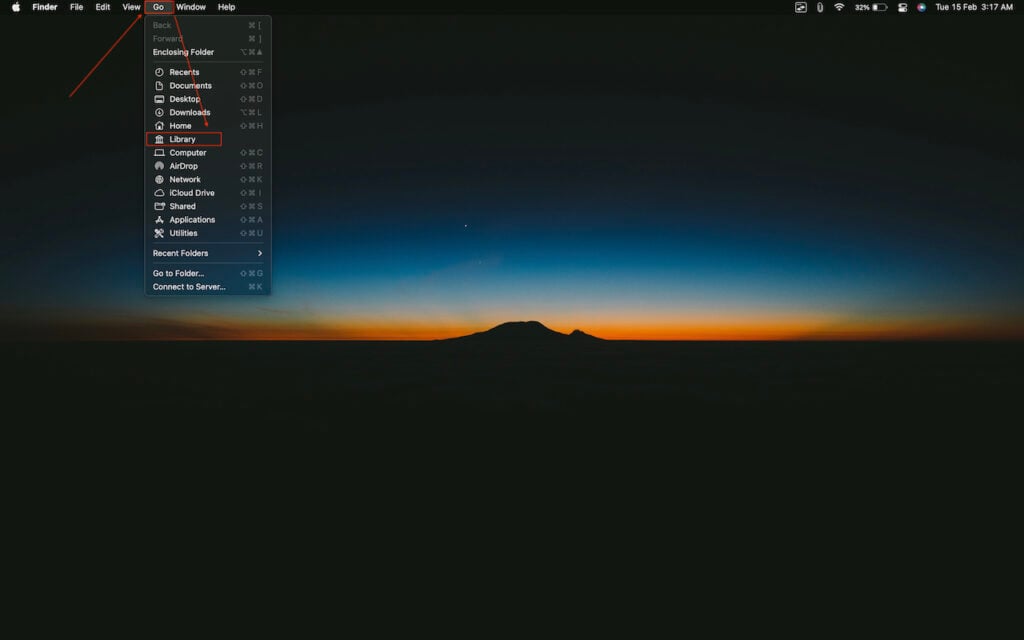
Step 7: Click on Caches.

Step 8: Select all the files in the folder and use the command + option + delete and click on Delete.

Run maintenance scripts on your Macbook
You lift the lid on your Macbook Pro, and it just works. Have you ever wondered how your system keeps everything running smoothly? Well, Mac OS runs a set of different maintenance scripts to delete system logs and temporary files.
In most cases, these scripts run on a daily/weekly/monthly basis, but sometimes they do not run at the prescribed frequency. Due to this, your system can start to malfunction and cause your screen to flicker.
To run maintenance scripts on your system, follow the steps given below:
Step 1: Open Spotlight on your system using the command + space shortcut.

Step 2: Search for Terminal in the Spotlight window press Return.

Step 3: Enter the command sudo periodic daily weekly monthly.

Step 4: Enter the password on your Macbook pro to run all the maintenance scripts.

Also read: How to fix the ‘About: invalid#zclosurez’ error?
Tweak power saving options to prevent your Macbook pro from flickering
If your Macbook has two GPUs’, Mac OS shifts between the two graphic processing units to save battery life. That said, this switching can cause your screen to flicker.
To prevent GPU switching on your device, you can follow the steps given below:
Step 1: Open Spotlight on your system using the command + space shortcut.

Step 2: Search for Battery to open the battery preferences on your system.

Step 3: Uncheck the checkbox next to Automatic graphics switching to prevent your GPU from switching.

Although changing this setting could prevent your screen from flickering, it will rely on your device’s discrete GPU drawing more power from your system.
Run device in safe mode
Mac OS comes with safe mode, a stripped-down version of the operating system. The operating system uses the bare minimum to start your Macbook pro when in this mode.
Safe mode starts by checking your startup drive for errors before loading the operating system. Thereafter, Mac OS is loaded without startup programs, third party extensions and user-installed fonts. In addition to this, the safe mode also clears the system cache.
Therefore, using safe mode can prevent your screen from flickering, and if it does, you can assume that there is a software issue with your system.
Systems with different hardware architectures need different methods to launch safe mode. Given below are the details on how you can enter into safe mode based on the system you are using.
Systems running Apple silicon
If your system is powered by Apple silicon, you need to follow the steps below to enter into safe mode.
Step 1: Click on the Apple logo on the top left corner of your screen and click on Shut Down.

Step 2: Click on Shut Down in the window that shows up.

Step 3: Press and hold the power button to turn on your device after 10 seconds of turning off your device. Your device will display Continue holding for startup options.

Step 4: Keep holding the power button, and your screen will show Loading startup options.

Step 5: Click on the startup drive, which shows on your device.

Step 6: Press the shift key and click on Continue in Safe Mode.

Once in safe mode, try using your system in the usual manner and if the flickering stops, then a software issue is probably the culprit for your screen issues.
Systems running Intel architecture
Entering safe mode on Intel-based systems is much easier when compared to devices running on Apple silicon. To enter safe mode on an Intel-powered Macbook Pro, follow the steps given below:
Step 1: Click on the Apple logo on the top left corner of your screen and click on Shut Down.

Step 2: Click on Shut Down in the window that shows up.

Step 3: Press and hold the shift key after pressing the power button to boot into safe mode.
Also read: Why is my Macbook Air fan so loud? 5 quick fixes
Reset the SMC on your device
The SMC or the System Management Controller handles several power management, thermal management, and sensor management features.
As the SMC is an integral part of your system, issues in its firmware can cause your screen to flicker.
If you are using a device powered by Apple silicon, you can’t reset the SMC on your device as it is part of the Apple silicon package.
To reset the SMC on your device, you can follow the steps given in this article.
Reset the PRAM/NVRAM on your device
If you were to mute your device before restarting, you would not hear the iconic Apple boot-up sound, but how does your system remember configurations even when it is turned off?
Well, the NVRAM/PRAM is responsible for storing system configurations even when your device is turned off. In addition to sound information, the NVRAM remembers your display settings, time zone configurations, and boot drive information to help your machine start up properly.
So, if there is a glitch in the NVRAM/PRAM, it can cause your display to flicker. To reset the NVRAM/PRAM on your device, you can follow the steps given below.
If you own a device that is powered by Apple silicon you can’t reset the NVRAM on your device
Step 1: Click on the Apple logo on the top left corner of your screen and click on Shut Down.

Step 2: Click on Shut Down in the window that shows up.

Step 3: Press the power button to start your device. Thereafter, press and hold the command+option+P+R combination for 20 seconds to reset the NVRAM on your device.

Holding this combination to reset your NVRAM/PRAM might restart your device.
What if your screen is still flickering?
If the display on your Macbook pro is still flickering, the best bet for fixing it is to take it to an Apple technician, and they will probably fix your device for you.
Also read: Switching from Windows to Mac? 5 things you need to know.






